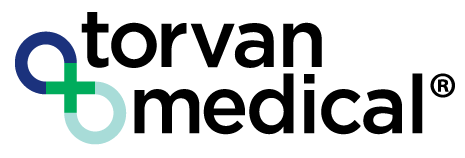Introduction
Healthcare-acquired infections (HAIs) remain a major challenge in healthcare facilities worldwide, affecting patient outcomes, increasing hospital stays, and contributing to rising healthcare costs. According to the Centers for Disease Control and Prevention (CDC), HAIs impact approximately 1 in 31 hospital patients daily in the United States alone1. Inadequate infection control practices can lead to outbreaks, antibiotic resistance, and severe complications, making a proactive infection prevention strategy essential for every healthcare facility.
Beyond patient safety, infection control has significant financial implications. The cost of treating HAIs runs into billions of dollars annually2. By implementing best practices and leveraging advanced medical reprocessing technologies, hospitals can reduce infection risks, improve compliance, and enhance overall patient care.
Understanding the Challenges of Infection Control in Hospitals
Infection control in hospitals is a multifaceted issue requiring strict protocols, advanced equipment, and continuous staff education. Some key challenges include:
Managing common sources of infection.
Surgical site infections, ventilator-associated pneumonia, bloodstream infections, and catheter-associated urinary tract infections (CAUTIs) are all common sources of infection in hospital settings.
Maintaining staff compliance.
Healthcare workers must adhere to strict hygiene practices but ensuring consistency and diligence in hand hygiene and personal protective equipment (PPE) is difficult.
Meeting regulatory requirements.
Hospitals must comply with infection control standards set by organizations such as the CDC, FDA, WHO, AAMI, and CMA. Non-compliance can lead to fines, damage to reputation, and loss of accreditation.
Preventing medical equipment contamination.
High-touch surfaces and reusable medical devices, including endoscopes and surgical instruments, pose significant risks if not properly cleaned, disinfected, and stored.
10 Proven Strategies to Improve Infection Control in Hospitals
1. Enforce Strict Hand Hygiene Protocols
- Handwashing compliance: Proper hand hygiene is one of the most effective ways to reduce infection transmission. Installing handwashing stations at key locations can help hospitals ensure that staff follow the CDC’s handwashing guidelines.
- Alcohol-based hand rubs: Providing easy access to alcohol-based hand sanitizers can significantly improve hand hygiene compliance.
- Training and monitoring: Regular training sessions and compliance monitoring can ensure adherence to hand hygiene protocols.
2. Improve Cleaning & Disinfection of Medical Equipment
- Differentiation between cleaning, disinfecting, and sterilizing: Cleaning removes visible contaminants, disinfection kills microorganisms, and sterilization eliminates microbial life.
- Eco-friendly solutions such as the AquaBrush System: This technology provides a safe and effective method for cleaning reusable surgical instruments while reducing environmental impact.
- Using the right disinfectants: Hospital-grade disinfectants should be chosen based on surface compatibility and efficacy against pathogens.
3. Specialized Equipment for Surgical Instrument Reprocessing
- Reprocessing sinks: Hands-free operation reduces contamination risks and improves workflow efficiency.
- TPS Flushing Pump: Thorough flushing of lumened instruments helps prevent microbial buildup.
- Automating Reprocessing: Reducing human error through automation can enhance instrument cleanliness and safety.
4. Proper Endoscope Storage & Drying
- Reduce the risk of microbial growth: Inadequately dried endoscopes can harbor bacteria and increase infection risks.
- EndoCab™ HEPA-Filtered Storage: Torvan Medical’s EndoCab™ uses HEPA filtration and channel purge technology to ensure thorough drying and safe storage.
- CDC and AAMI guidelines: Following best practices for endoscope storage prevents cross-contamination and extends equipment lifespan.
5. Implement Contact Precautions & Isolation Protocols
- Proper handling of contagious patients: Strict isolation protocols help prevent the spread of infections in hospital environments.
- Use of PPE: Gloves, masks, and gowns should be used properly and disposed of after each patient interaction.
- Dedicated equipment protocols: Ensuring that isolation rooms have separate equipment minimizes infection spread.
6. Invest in Ergonomic & Easy-to-Clean Workstations
- Reducing contamination risks: Smooth, non-porous surfaces are easier to keep clean.
- Height-adjustable: Ergonomic designs help reduce strain on staff.
7. Improve Waste Management & Sharps Disposal
- Safe handling of biohazardous waste: Use proper disposal methods for all infectious waste.
- Preventing needlestick injuries: Needle disposal containers and strict safety protocols help protect healthcare workers from bloodborne pathogens.
- Color-coded waste segregation: Proper waste segregation reduces the risk of cross-contamination.
8. Enhanced Air Filtration & Ventilation Systems
- HEPA-Filtration: High-efficiency Particulate Air (HEPA) filters remove airborne contaminants.
- Sterile zones: Ensuring operating rooms and critical care areas have enhanced air purification helps maintain infection-free areas.
- Regular HVAC maintenance: Keeping ventilation systems in optimal condition helps minimize airborne infections.
9. Staff Training & Compliance Monitoring
- Regular Infection Prevention Training: Ongoing education ensures staff stay updated on best practices.
- Audits and checklists: Monitoring staff compliance with infection control protocols improves adherence.
- Encouraging a culture of accountability: Leadership should promote infection prevention as a shared responsibility among staff.
10. Leverage Technology & Automation in Infection Control
- Artificial intelligence (AI) and Automated Monitoring: AI-powered systems can track cleaning and sterilization processes in real-time.
- RFID and Barcode Tracking: Digital tracking ensures that medical instruments are properly reprocessed and accounted for.
- Remote Monitoring: Cloud-based systems enable hospitals to monitor infection control measures remotely, improving oversight and efficiency.
Conclusion
Improving infection control in hospitals requires a combination of advanced technology, strict protocols, and continuous staff education. Properly implemented, these strategies can help hospitals reduce HAIs, protect patients, and enhance overall healthcare efficiency.
Torvan Medical’s innovative infection control solutions, including reprocessing sinks, TPS Flushing Pumps, and EndoCab™ HEPA-filtered storage cabinets, provide hospitals with tools to optimize their cleaning, sterilization, and equipment storage protocols.
Investing in best-in-class infection control technology can help hospitals create safer environments, improve patient outcomes, and ensure compliance with healthcare regulations. Hospitals that prioritize infection prevention will build a foundation for long-term success in patient care and safety.
References
- Centers for Disease Control and Prevention. (2020). Healthcare-Associated Infections Data Portal.
- Gidey K, Gidey M, Hailu B, Gebreamlak Z, Niriayo Y. Clinical and economic burden of healthcare-associated infections: A prospective cohort study. PLOS One. February 2023.


